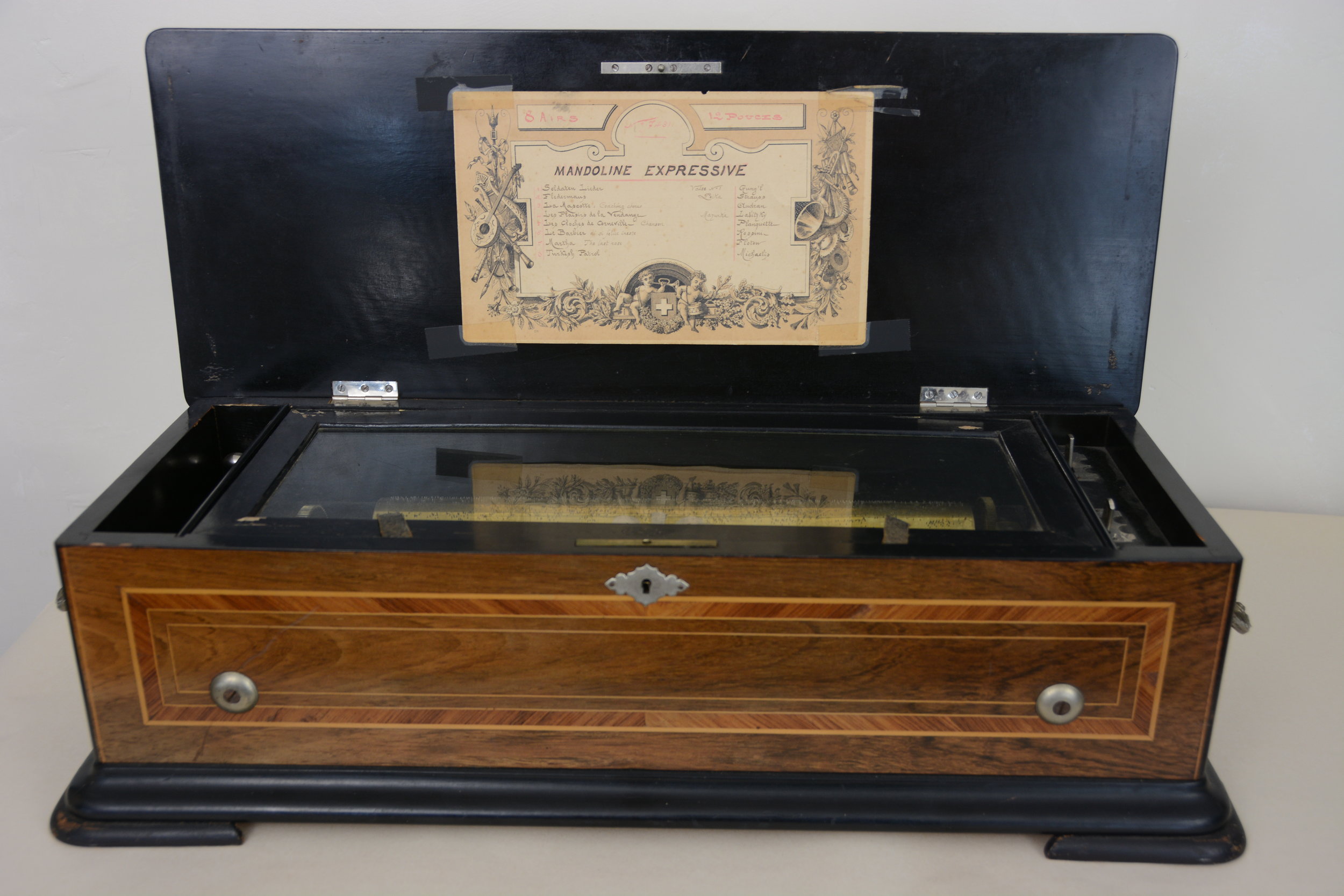Visit “Before 1620: Who Was Here?” to view our collection of Native artifacts, land deed and to learn more about Wampanoag history and present. Museum hours Wed-Sat 1-4.
Read MoreJohn by John →
John Mulcahy’s sister, Catherine Mulcahy, bequeathed this artist self-portrait to us upon her death in September of 2019. John by John, 1997, is a beautiful, tender, exciting, abstract portrait with white beard.
Read MoreHighlight from the collection
Mortar and Pestle #2000.6
The pestle is made from an oblong narrow stone 6” - The Mortar hand carved from a tree trunk (or limb) 6” high, 5” wide.
Given to Helen Olsen by Emma Fisher ………
Read MoreStereoscope Viewing
As the evenings get cooler, sunsets are earlier and many of us turn our attention to spending time with photographs. These may be on fb or instagram, but in the latter half of the 19th century folks enjoyed looking at photographs using a stereoscope. This stereoscope was donated to WHS&M in 1963 by Colonel Herman Alvin Drehle.
Read More"The Clam Diggers", wood engraving by Clare Leighton. →
The highlight from our collection: The Clam Diggers: WHS2013.3 is a beautiful wood engraving by Clare Leighton 153/250, signed and undated. It depicts 4 clam diggers working at low tide. It was generously donated by Julie Heller.
Read MorePenny Rug Donated by Florence Rich in 1979
Penny rugs were originally made from scraps of wool fabric or felt, as they were an economical way of using pieces that were too small to braid or hook. 19th century women saved scraps from men’s suits, hats or blankets. Named “Penny Rugs” because coins were used as a template.
Read MoreHighlights From Our Collection
Mandoline Expressive Musical Box,
The music box case is rosewood, inlaid with veneer bands of other woods and a mysterious ornamental cartouche on its top.
Mandoline Expressive Musical Box,
Model 7437 Paillard, Vaucher & Fils, St. Croix Switzerland, c 1880 w1957.12
This beautiful music box was the wedding gift of Englishman, Carl Taylor, to his bride, Mabel Tubman, a Wellfleet native. At 38, Mabel was living with her parents before her 1919 wedding to Carl, 44. Carl was an engineer who came to Cape Cod with Marconi to establish the Wireless Station in South Wellfleet in 1903.
Carl donated this music box to the Historical Society in 1957, shortly after Mabel’s passing.
With a single winding, its spring-powered clockwork mechanism can play thirty minutes of eight different musical selections as pins on its slowly revolving brass cylinder strike tuned steel teeth that vibrate musically.
In the early 20th Century, music boxes were displaced by Thomas Edison’s phonograph but in their day music boxes were highly coveted.



